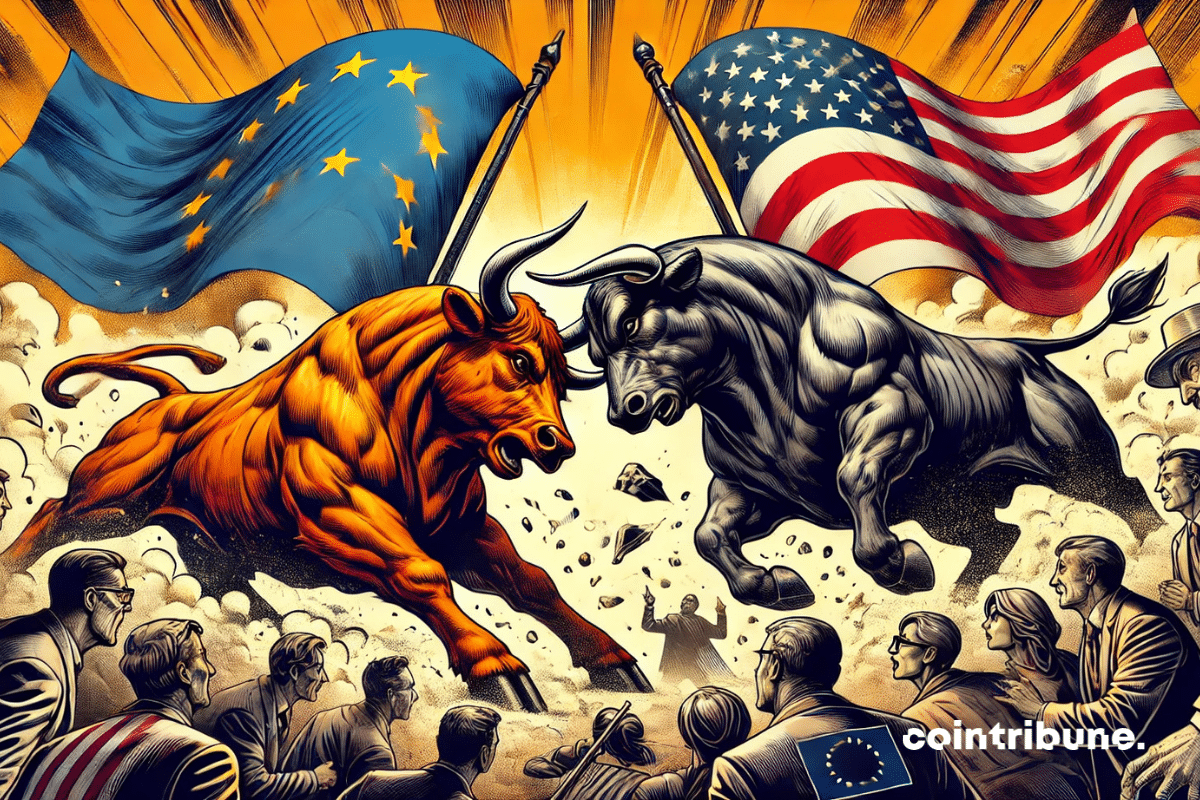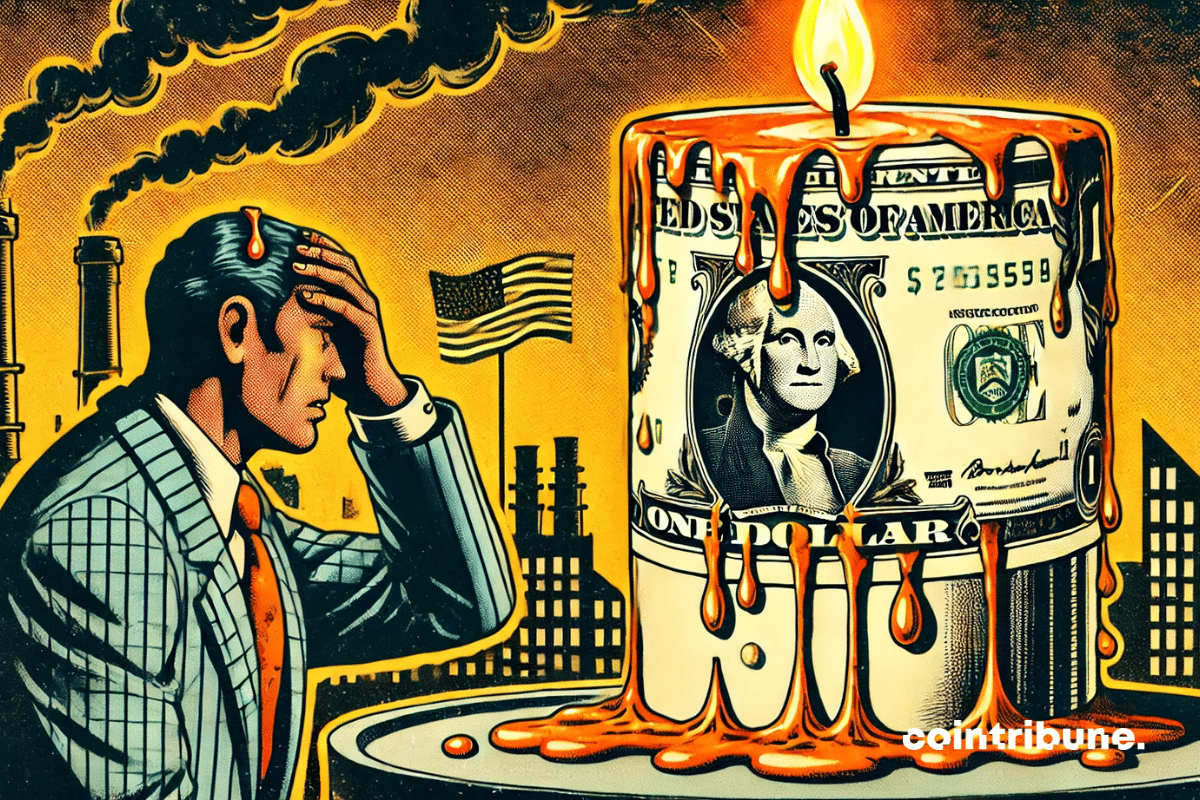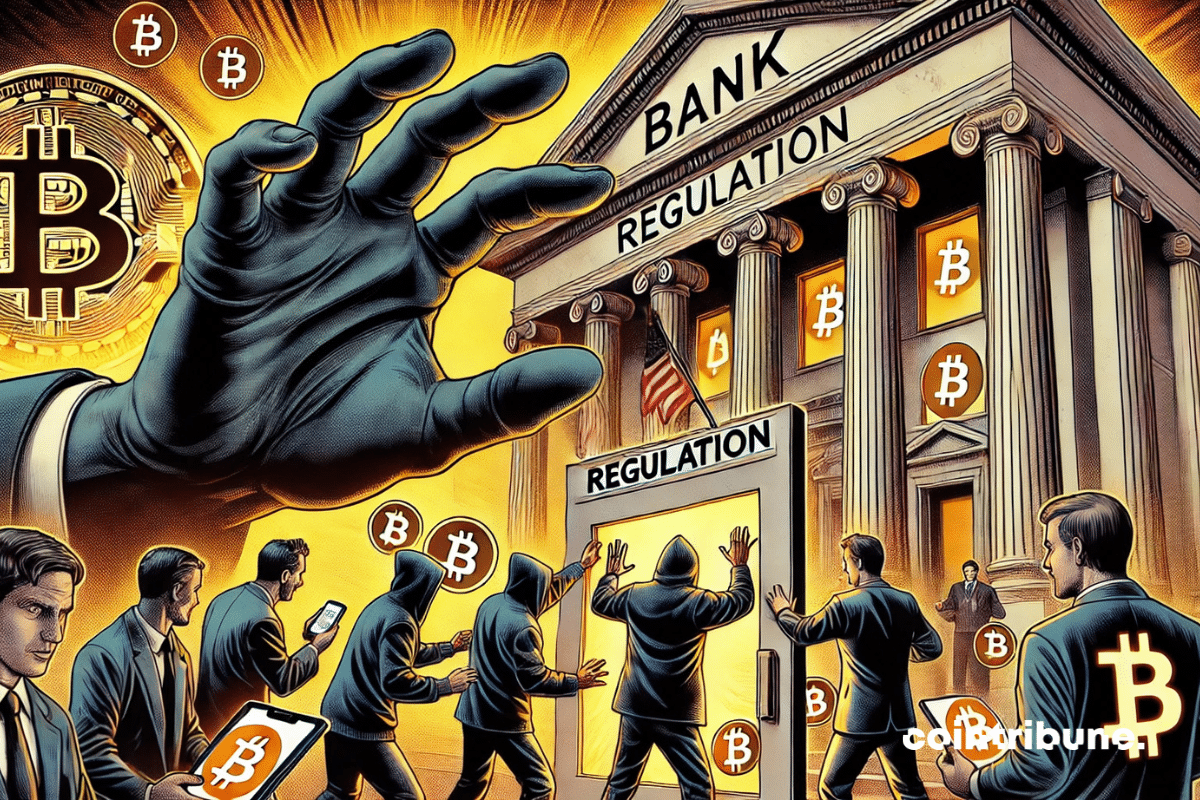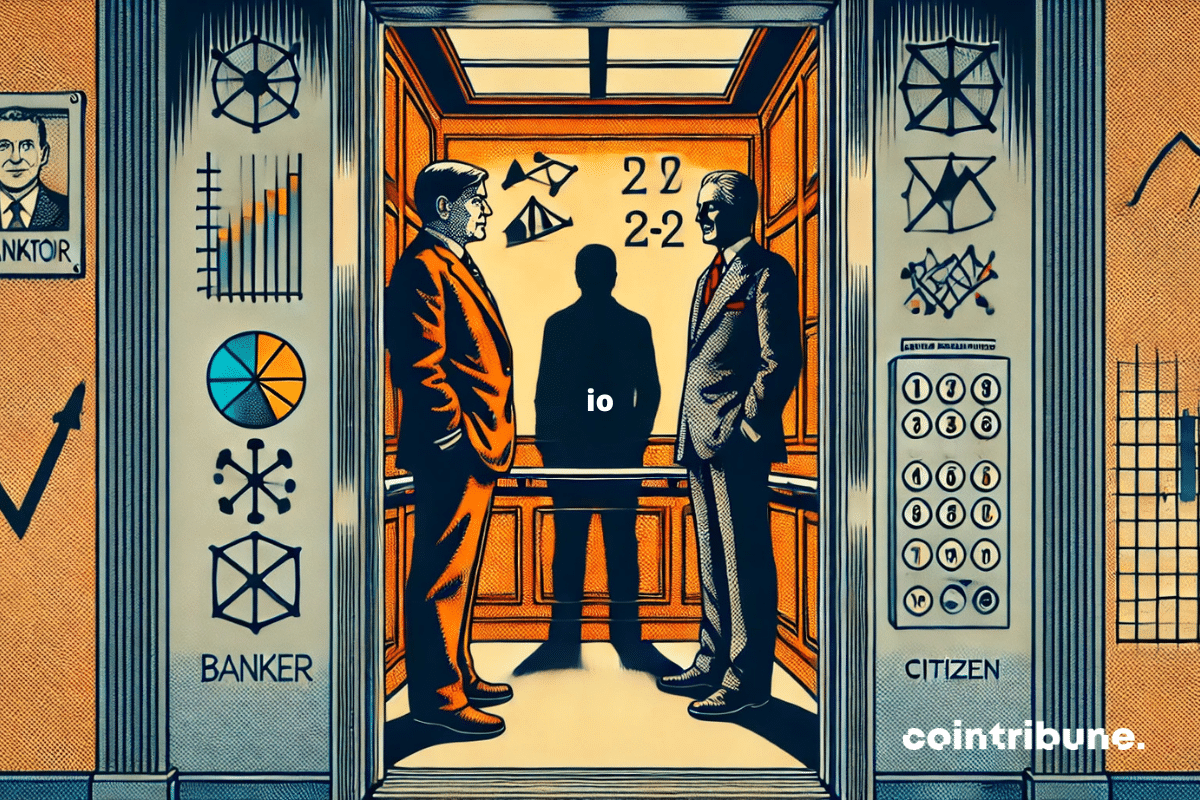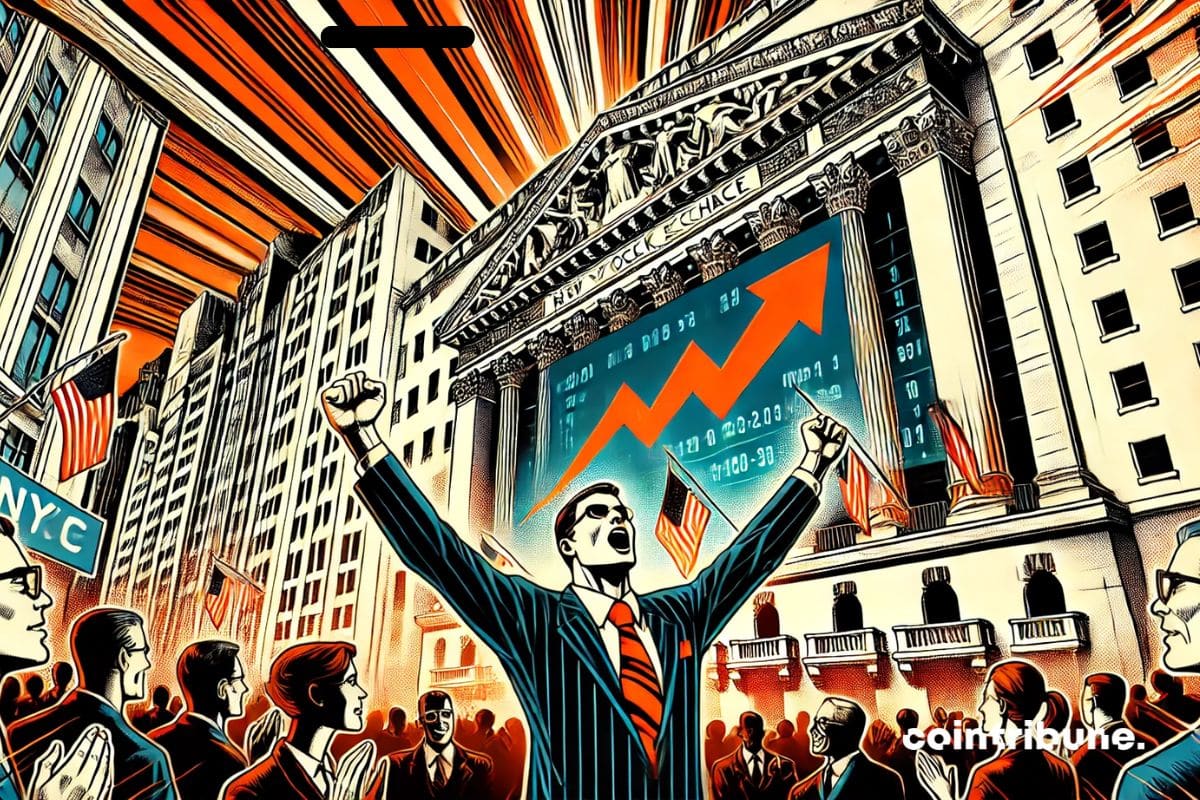Investors are closely monitoring every signal from the American Federal Reserve (Fed), whose monetary policy could trigger a bear market. While some were hoping for rate cuts as early as 2024, the latest statement from Fed Chair Jerome Powell has dampened those expectations. The absence of rate reductions could put pressure on financial markets, particularly on risky assets like Bitcoin. Economist Timothy Peterson warns: if the Fed does not cut rates by 2025, the Nasdaq could collapse, dragging the cryptocurrency market along with it. A new correction of Bitcoin below $70,000 is now a serious possibility.
Finance News
A European stock market in full swing, investors overjoyed, and Wall Street wondering where its crown has gone... Is the stock market history now being written the European way?
The American economy is going through a turbulent phase. Between rising inflation and a marked slowdown in growth, a long-forgotten specter resurfaces: stagflation. This phenomenon, which combines economic stagnation and rising prices, evokes the crises of the 1970s. Today, Donald Trump's new tariff policies rekindle fears of a return to that time when growth was stalled and purchasing power was eroding rapidly. The American president's decision to impose heavy taxes on Chinese, Mexican, and Canadian imports raises many questions about their real effects on the economy. As the Federal Reserve is pushed to its limits, markets are wavering, and businesses are concerned about the repercussions on their profitability.
Access to mortgage credit is a key barometer of economic health and the purchasing power of households. After a drastic decline in lending volumes in 2023, the European Central Bank (ECB) has initiated a shift with its first rate cut. This decision, welcomed by the Governor of the Bank of France, François Villeroy de Galhau, is accompanied by a series of indicators that suggest a gradual recovery in the market. But is this upswing sustainable? And above all, will it be enough to permanently reverse the trend for borrowers and actors in the real estate sector?
Bitwise is preparing an Aptos ETF: a major breakthrough or too risky a bet for crypto investors? The details in this article.
The global economic scene is in full turmoil. In just a few months, trade tensions between China and the United States have reached a new level, severely impacting the foreign trade of the Asian giant. Official figures released by Chinese customs indicate a brutal slowdown, much more pronounced than expected, in exports and imports. In the background, a declining internal consumption and an uncertain economic climate amplify concerns. As Beijing sets an ambitious growth target, this halt raises many questions about the country's ability to maintain its dynamism in the face of repeated attacks from Washington.
The fragile balance of the conflict in Ukraine has just experienced a new twist. Donald Trump, the American president, discussed the possibility of imposing massive bank sanctions and high tariffs against Russia. This statement comes as Moscow intensifies its strikes on Ukrainian infrastructure, while Washington's position wavers between conditional support for Kiev and seeking a diplomatic solution. However, this posture of firmness is accompanied by contradictory decisions, raising questions about Trump's true intentions in foreign policy.
Between ideology and regulation, the debanking war rages: a battle where crypto and "risky" industries fight for their survival.
The Trump administration has just taken a new step in the regulation and integration of cryptocurrencies in the United States. President Donald Trump signed a presidential decree late last night that establishes a Strategic Bitcoin Reserve and a Digital Asset Stockpile, an initiative that transforms the American approach to cryptocurrencies.
Between the requisitioned Livret A, lightly tapped fortunes, and a starving military budget, Manu juggles: finding billions without upsetting anyone, this is an art worthy of the French budget circus.
The integration of tokenized real-world assets (RWA) into decentralized finance (DeFi) opens up new opportunities for investors and borrowers. Credefi, as a DeFi lending platform specialized in financing SMEs and trade, is well positioned to capitalize on this trend and offer attractive returns while mitigating the risks of the crypto market.
Michael Saylor dropped some crumbs on the Fox News microphone on the eve of the roundtable organized by the White House with leaders of the crypto community.
On March 6, 2025, the administration of the Dantewada district, located in the state of Chhattisgarh in India, announced the digitization of more than 700,000 land documents dating back to the 1950s, now secured on the Avalanche blockchain. This initiative aims to ensure the transparency and integrity of land records, preventing any alteration or forgery.
The United States has taken the bull by the horns both economically and geopolitically. Many things are going to change and, in the end, bitcoin will find its way.
The economic confrontation between the United States and China is taking on a new dimension. Indeed, far from being limited to traditional exchanges, this trade war is now affecting the crypto market. Thus, between Donald Trump's announcement regarding the creation of a national strategic reserve of cryptocurrencies and the Chinese response to American economic sanctions, investors are witnessing market movements of rare intensity. The question now arises: is this instability temporary or should we expect a lasting impact?
Alexis Ohanian, co-founder of Reddit, has confirmed his intention to participate in the acquisition of TikTok's U.S. operations to transform it into a blockchain-based platform. This initiative comes in the context of the Chinese application facing a potential ban in the United States under the Trump administration.
Like a rising tide, Aave is reshaping its economy: buybacks, redistribution, protection... The fragile balance of decentralized finance wavers under this bold overhaul.
Oil markets have been caught off guard. While traders expected a delay in the increase of oil production by OPEC+, the cartel ultimately confirmed that it would return 2.2 million barrels per day to the market starting in April. This decision immediately triggered a brutal price reaction: Brent crude fell to $70.60, its lowest level in five months. This strategic choice, which comes after several successive delays, profoundly alters the balance of supply and demand in an already uncertain economic context.
The American stock market has just experienced a financial earthquake. In just a few hours, 3.4 trillion dollars evaporated, erasing the post-election gains in one fell swoop. A disastrous scenario that plunges Wall Street into an unprecedented stupor. And in the crosshairs? Donald Trump, whose new tariffs have ignited the fuse of a crisis with global repercussions.
The economic clash between the Global South and the United States is taking a new turn, with Brazil emerging as a key player in this monetary battle. By opposing the supremacy of the US dollar, the Latin American country is redefining global financial balances and questioning the traditional architecture of international trade. This decision is part of a process of dedollarization, which is gaining momentum within the BRICS and could deeply modify international economic circuits.
After falling below $90,000, Bitcoin faced selling pressure, resulting in a nearly 14% drop. Find Elyfe's analysis to decipher the technical outlook for BTC.
The figure has startled the markets: inflation in the eurozone was set at 2.4% in February, according to Eurostat. A slight decrease, indeed, but enough to reignite the debate on the European Central Bank's (ECB) next moves. Between cautious optimism and geopolitical clouds, the euro wavers on a tightrope. Behind these percentages lie contrasting realities: declining energy, resilient services, and a Germany that holds firm. An analysis of a somewhat muted economic landscape.
Donald Trump sparked an uproar by announcing that the strategic reserve of bitcoins would also include other cryptocurrencies.
Stock Market: spectacular rebound of the markets. Europe is coming out on top while Wall Street plunges! The details in this article.
Amid revolutionary announcements, technological advancements, and regulatory turbulence, the crypto ecosystem continues to prove that it is both a territory of limitless innovations and a battleground of regulatory and economic challenges. Here is a summary of the most significant news from the past week surrounding Bitcoin, Ethereum, Binance, Solana, and Ripple.
The global economy is evolving under the pressure of increasing trade tensions. As the United States imposes new tariffs, Europe finds itself facing a strategic dilemma. Balancing its traditional alliances and diversifying its economic partnerships, the continent is now looking towards the BRICS. This organization, once seen as a counterweight to the G7, is today consolidating its position by forging closer ties with Europe. This shift could redefine the economic and political power dynamics on a global scale.
On Friday, February 28, 2025, the American stock markets experienced an exceptional day, adding more than 825 billion dollars in market capitalization. The main indices on Wall Street are significantly up, driven by a remarkable performance from the tech giants.
The BlackRock behemoth is walking a tightrope: a net of Bitcoin in its portfolio, 2% of audacity, a breeze of panic among the maximalists. Who will give in first?
Economic tensions between the United States and the European Union have reached a new high. Donald Trump, true to his protectionist policy, has just announced a dramatic increase in customs duties on European exports, raising their level to 25%. A brutal decision that far exceeds the 10% mentioned during his campaign and places Europe in a situation of diplomatic and economic urgency. The major powers of the Old Continent must now face a threat that could reshape global trade balances.
The River exchange platform has published a very interesting report on bitcoin. It shows that we are at the very beginning of an adoption rate similar to that of the internet.

